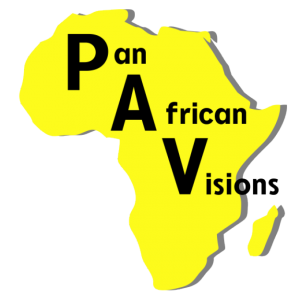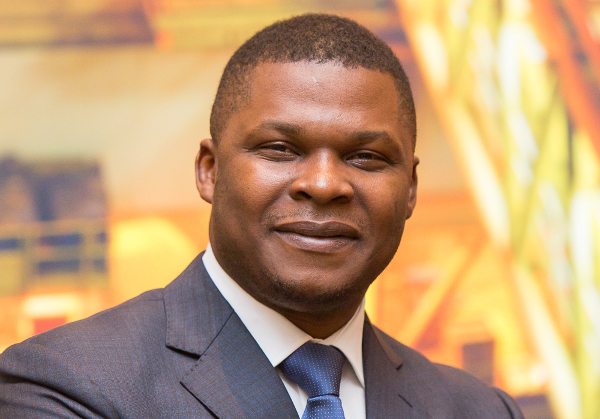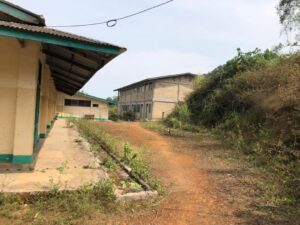Implications of the one constituency, one million dollars initiative for Ghana’s basic infrastructure development
March 10, 2020Prior to its election into office on 7th December, 2016 the New Patriotic Party (NPP) in its Manifesto promised inter alia, to “eradicate poverty and minimise inequality among socio-economic groups within geographical areas through the direct provision of basic infrastructure at the constituency level, especially in rural and deprived communities.”
Here are the implications of the one constituency, one million dollars initiative for Ghana’s basic infrastructure development.
The overarching idea of the one constituency, one million dollars initiative by the President Nana Akufo-Addo-led government is to expedite the process of bridging Ghana’s poverty and infrastructure gap, which is currently estimated at US$30 billion.
The current administration perceives this
programme as essential to meeting the critical infrastructure needs identified
and prioritised by key stakeholders at the constituency level.
The one constituency, one million dollars is
one of the three major flagship programmes supervised by the Ministry of
Special Development Initiatives at the Office of the President; and forms an
integral part of the government’s Infrastructure for Poverty Eradication
Programme (IPEP).
The IPEP is expected to complement other
government infrastructure projects and involves a bottom-up development
approach.
That is, the central focus of government’s
development through the IPEP is at the local level; infrastructural development
is envisaged to commence at the local level through to the national level.
To ensure value-for-money, needs
assessment of each constituency in the country was duly carried out.
This helped in the identification and
prioritisation of basic infrastructure needs of beneficiaries at the
constituency level.
Capital expenditure required for specific
infrastructure and economic development at the constituency level would be
driven by the Infrastructure for Poverty Eradication Programme.
To assure the revolving basic
infrastructural needs are adequately captured, needs assessment of the various
constituencies would be updated on a continuous basis.
Some projects executed under the programme
include, but not limited to the construction of community town centres,
drainage systems, and footbridges; provision of desks for schools, renovation
of schools; and reshaping of roads, among others.
IPEP would ensure the collated and
prioritised infrastructural needs of each constituency are met through the
allocated funds.
Allocation
of Funds for the Project
Budgetary allocations for all the
constituencies commenced in 2017. However, due to the delay in the enactment
for the three Development Authorities, the funds were initially disbursed
through the Minister for Special Development Initiatives at the Office of the
President.
In July 2019, the Finance Ministry
released GH¢1,664 million equivalent to US$320 million for the implementation
of the one constituency, one million dollars initiative in 2020.
Letters of commencement required for
effective disbursement and utilisation of the funds have been granted by the
Finance Ministry to the three development authorities, namely the Northern
Development Authority, Middle Belt Development Authority, and Coastal
Development Authority.
The development authorities are
responsible for respective management of the funds and implementation of the
projects.
The US$320 million includes the
disbursement of US$275 million to the 275 constituencies, and US$45 million for
outstanding commitments.
Since this initiative does not substitute
for annual allocations to the District Assemblies through the District
Assemblies’ Common Fund, funds that would be available for infrastructure
development and poverty eradication in each district are expected to increase.
All else held constant, this suggests the
need for corresponding improvements and increase in infrastructure development
and poverty reduction in the various constituencies and districts across the
country.
Conclusion
Though the country’s economic trajectory
is on a sound footing, her poverty and infrastructure gap (US$30 billion) is
high relative to the estimated GDP for 2019 (US$70 billion).
In percentage terms, the total estimates
(US$30 billion) for Ghana’s poverty and infrastructure gap translate into about
42.86% ((US$30 billion ÷ US$70 billion) x 100% = 0.428571 x 100% = 42.857 =
42.86%) of the estimated GDP for 2019 (US$70 billion).
As noted elsewhere, challenges to adequate
provision of infrastructure in recent and prior years could be attributed mainly
to non-availability of funds and other resources.
However, the investment of US$320 million
at the constituency level by President Nana Akufo-Addo’s government is expected
to stem the tide; and to help the economy make considerable gains in the area
of infrastructural development.
It is hoped successful implementation of
the infrastructural development programmes at the constituency, regional, and
national levels would create direct and indirect jobs through the establishment
of facilities such as auto servicing stations, super markets, fuel stations,
rest stops, wash rooms, cafeteria, and parking, among other essential
socio-economic facilities.
Further, it would increase competition among trades and businesses, increase efficiency and effectiveness in productivity, boost intra- and inter-regional trade, make the rural communities attractive to local and foreign investors, and allow the private sector to lead national economic growth.
Author: Ebenezer M. Ashley (PhD)
Fellow Chartered
Economist & CEO of EBEN Consultancy
Email: ebenezer.ashley@gmail.com
Website: www.ebenezerashley.com
The post Implications of the one constituency, one million dollars initiative for Ghana’s basic infrastructure development appeared first on Ghana Talks Business.
Ghana Talks Business
Source : African Media Agency (AMA)








